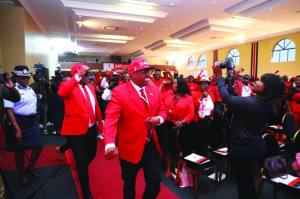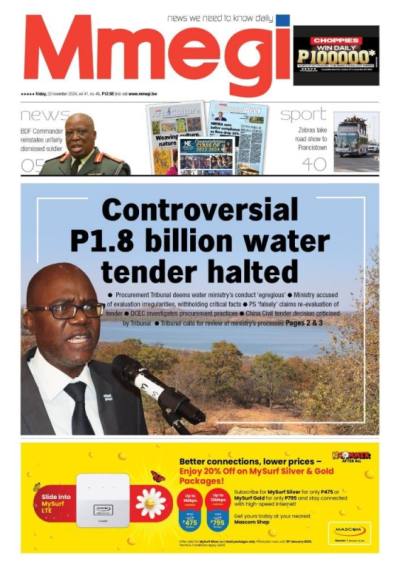We live in a time when the historical role of the diamond bourses is being questioned.
Today, at the touch of a mouse or a mobile screen a whole business environment opens to all of us, with billions of dollars’ worth of merchandise on offer. Modern technology even enables us to inspect the stones online.
But the bourses remain relevant. In places like Mumbai and Surat or Tel Aviv, the importance of the traditional trading floor and the many offices cannot be overestimated. Even when the virtual environment has achieved dominance over the physical, the bourse’s leadership and authority remain essential worldwide.
Still, as the Romans used to say “Tempura mutantur et nos mutamur in illis,” times change and we are changing in them. The WFDB and its members need to adjust. If you are not digitally capable today, you will lose all relevance.
The digital environment is also shaping the consumers who buy our products. It would be foolhardy to dismiss what they have been informed about online. We should not underestimate their conviction, when they enter a retail store and ask “where do these diamonds come from, how were they mined, and were they polished under ethical and responsible circumstances?”
But here technology is not only a challenge – it’s part of the solution. It increasingly provides us with tools we need to confirm a stone’s origin and/or provenance.
Artificial intelligence and other technologies, like blockchain, help enhance transparency and maybe one day provide a solution to full traceability.
And let me just clarify when I say “transparency.” I refer to a principle where, to the best of our ability, we are completely candid about how we acquire, sell and handle diamonds, and what we know about their source and provenance. “Traceability,” in contrast, is a system where an individual diamond can be reliably traced from the moment it is mined to the point at which it sold to the final consumer.
Full traceability today is possible only in a handful of instances, and it will likely remain an elusive ideal, especially given the problem of tracing alluvial diamonds worldwide. And then we have the hundreds of millions of polished diamonds already in the marketplace, not to mention, the largest “diamond mine” in the world: stones in the public’s possession.
Transparency, however, is a prerequisite for doing our business.
In 2000, the WFDB was a co-founder of the WDC together with IDMA, soon to be joined by CIBJO. The WDC was to become the industry’s representative in the Kimberley Process. The Kimberley Process Certification Scheme was launched at the beginning of 2003 and was based on a blueprint drawn up within the WDC. In our supply chain today, transparency begins with KP compliance.
What provides the KPCS with its unique status is that it is the first due diligence element in what today is a multi-layered system, and still the only one to be enforced by law.
Is the KPCS perfect? No, it is not. In a rough diamond market worth $13-$15 billion, there will always be individuals who will try to circumvent the system. To stop this within the KP, we need the full cooperation of honest governments.
To those who criticize us I say: your comments — if constructive — are welcome. But the KP is the foundation of our due diligence system and responsible sourcing. Even if it is not perfect, it should not be discarded, rather improved. For those who call it to be thrown out, I say: be careful what you ask for.
But, as we are all aware, the KP is limited in scope and essentially must be augmented by additional layers of due diligence to fully ensure supply chain integrity.
The second of those layers, and the one that is almost universally applied, is the WDC’s System of Warranties. A revised SoW warranty declaration was introduced in 2021 and will need to be applied by all industry participants by 2024 in the case of rough goods, and by 2026 in the case of polished. I will return to that subject shortly.
Other due diligence systems, some technologically driven and others third-party audited have been layered above the KPCS and the SoW. Together they provide a more comprehensive guarantee of supply-chain integrity.
Today, through the KP and the work that we all do, I am convinced that 99.9 percent of all diamonds in the global marketplace are conflict free. It’s difficult to prove, however, particularly, because of the recyclable goods already in the hands of the consumers.
While we currently are unable to show every diamond’s provenance, we certainly can indicate what we are doing to support supply-chain integrity. And here we need to go beyond demonstrating that a diamond is not associated with civil conflict, but that it also has been handled in compliance with essential human rights, labor standards, anti-corruption principles and anti-money laundering protocols.
It is for this reason that the WDC revised the System of Warranties. We did so to make sure that all participants – and that means all members of WFDB and other organizations – do their due diligence on every aspect of the diamonds and their supply chain.
Now let me address the elephant in the room – Russian diamonds currently are sanctioned in one way or another by the governments of several key consuming countries, although there are exceptions.
The most stringent system is being imposed by the United States, which comprises more than 50 percent of the diamond market. An increasing number of American retailers, including the largest, are now demanding proof that their polished supplies are free of Russian goods.
Furthermore, there currently are talks underway to expand more stringent American requirements to other G7 countries – namely Canada, France, Germany, Italy, Japan and the United Kingdom, as well as in the European Union. This means that segregating Russian-sourced goods is likely to soon become standard practice – at the very least for diamonds above a certain size – for all dealers doing business in any of the relevant countries.
Since the start of the crisis, we at WDC have publicly insisted that all in the diamond industry strictly follow the law in the countries in which they operate.
We cannot be indifferent to the tragic loss of many lives in the Ukraine, as well as the loss of property and livelihoods, and the displacement of millions of people.
Over and above the law, which is a red line we cannot cross, each businessperson needs to act according to his or her conscience. I respect that people, who also are ethical, have different points of view, and need to consider outcomes that are sometimes not the same as mine. Hundreds of thousands of people, who rely on diamonds for their livelihood, depend on the decisions that you and we make.
In a few months’ time I will conclude my term as President of the WDC. If I have a parting word of advice, it is to reiterate a commitment I have made for many years: “leave no one behind.”
That means that whatever we do in protecting the integrity of our supply chain, we need to ensure that diamonds contribute to the wellbeing of those involved in the industry. We serve not only larger corporations, but also smaller and medium-sized companies. They make up the bulk of our community.
At the WDC, my successor will be Feriel Zerouki. Born in Abu Dhabi and bred in Algeria, she is a shining example – both of a woman who broke the glass ceiling, and as well of the diversity we strive for in this industry. I am happy she was willing to succeed me and carry out her duties alongside her already very intense position as Senior Vice President Corporate Affairs at De Beers.
We must make sure that our policies promoting responsible sourcing, sustainability and diversity are understandable and applicable for everybody dealing with diamonds or jewellery.
*Asscher is the World Diamond Council president. This is an excerpt of the speech he recently made to the World Federation of Diamond Bourses Congress held in Israel







